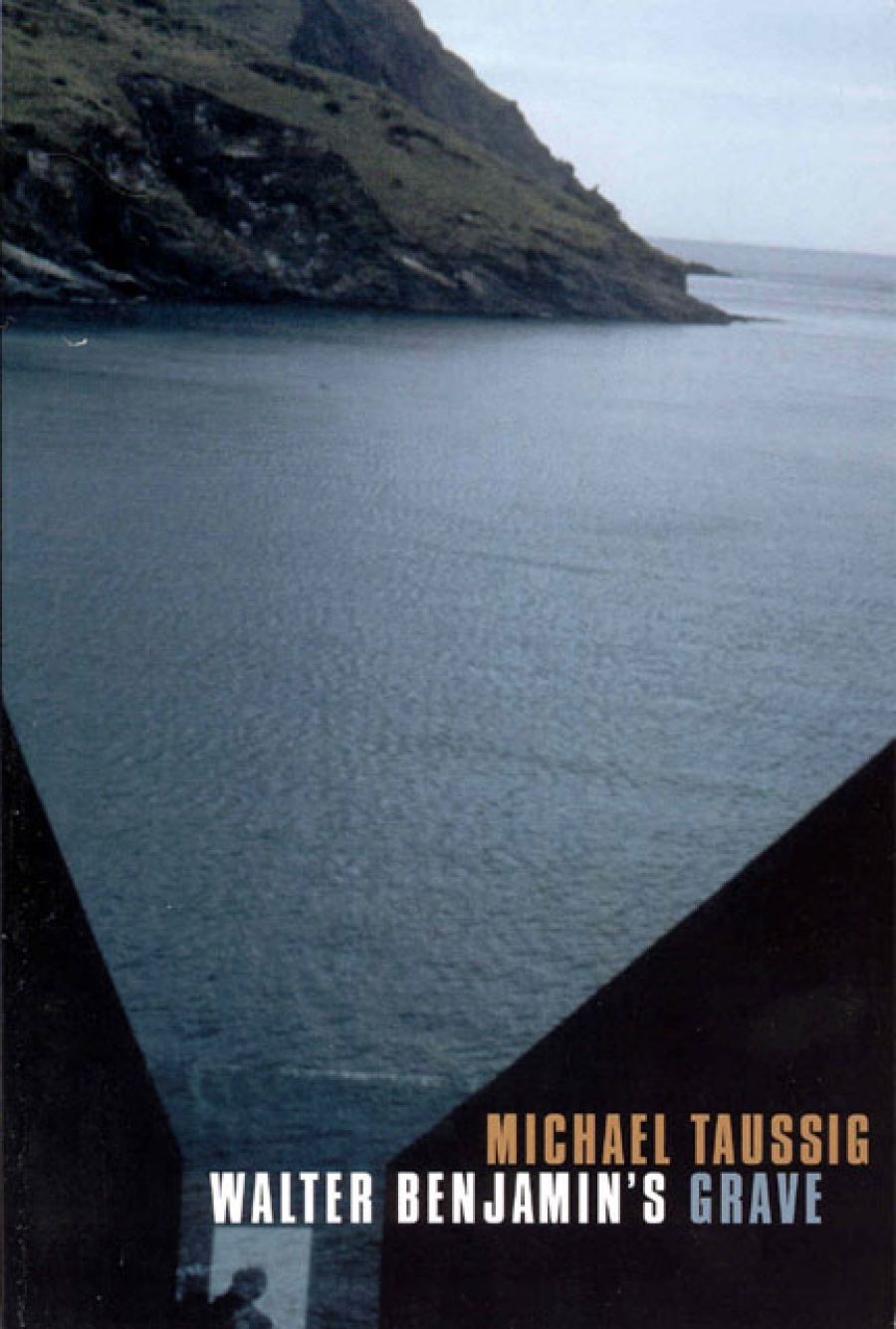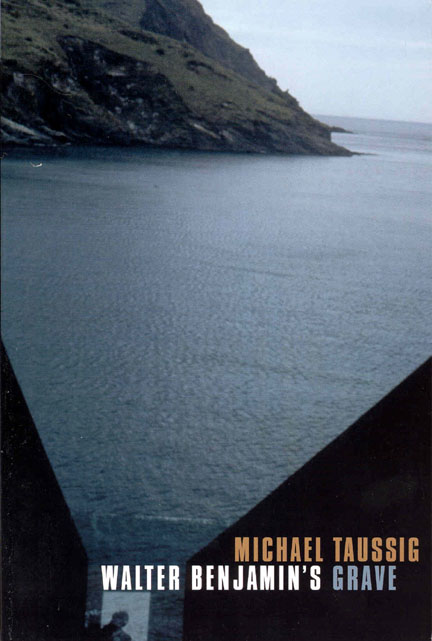
- Free Article: No
- Contents Category: Literary Studies
- Custom Article Title: The trick will always win
- Review Article: Yes
- Article Title: The trick will always win
- Online Only: No
- Custom Highlight Text:
Dancing on Walter Benjamin’s grave, in this book, Michael Taussig is in some ways his reincarnation; born in Sydney in 1940, the same year that Benjamin, trying to escape the Nazis, died in Port Bou, on the edge of the Pyrenees. The dance that Taussig performs is of course a homage to the great intellectual: the most inspired thinker coming out of the Frankfurt school, the most uncompromising, and the most writerly and experimental. Benjamin was a broad thinker, in the best sense. He did not think and write for the benefit of a discipline, but he taught his readers to weave together understandings of contemporary culture, coupled with a Nietzschian sense of history shot through with the ‘profane illumination’ of ancient myths whose impulses always throb in human dreams.
- Book 1 Title: Walter Benjamin's Grave
- Book 1 Biblio: University of Chicago Press, $39.95 pb, 256 pp, 0226790045
- Book 1 Cover Small (400 x 600):

- Book 1 Cover (800 x 1200):

He shows us how culture works – let’s just leap in anywhere here – by opening the wound onto the sacred, delving into the surrealist philosophy of Georges Bataille. He does not define consumption as the utilitarian need for the commodity, which is how the stories of the cave paintings in Lascaux have been interpreted: ‘images the magical power of which shall ensure the success of the hunt and the satisfaction of need.’ Taussig, with Bataille, suggests, rather, that we consider such images as ‘the opening to the sacred consequent to the violence of violating the prohibition against killing’. Coming after the event, they are more like thanksgiving, a communal ritual. This is why all the best art is inspired by overwhelming singular experience, and finds its form in a distorted echo of the anonymous wisdom passed on through storytellers.
Our language is the repository of all that strange ancient stuff. Our disciplines gain their authority, not through the repetition of study patterns, but, as Taussig says, through ‘the belief in the literal basis to metaphor – that once upon a time, or in distant places, human sacrifice and spirit possession and miracles did occur, and ghosts and spirits, sorcerers and witches, gods and people making devil’s pacts did walk the face of the earth.’ In other words, without those beliefs, anthropology and history are nothing. But have our contemporary cultures exorcised all past magic and superstition? The anthropologist who comes back from the field to report on ‘lost’ beliefs, does nothing but shore up his or her own modern scientificity (implying that ‘we’ have no such beliefs). But contemporary cultures are replete with traces of ancient magic, flashing up at the intense moments of national ritual, for instance, or when George W. Bush stands on the rubble of the World Trade Centre, evokes a satanic enemy and pledges deliverance. Never were we more in need of anthropologists to unravel the power of magic wielded for political purposes.
And language and storytelling? This is the stuff on which Taussig conducts his pagan rites; pagan because his dialectic never lifts contradictions into a unified transcendental whole – the one God – but every mountain and river, monument and song has the potential to release its strangeness into the world afresh. Especially when evoked by that stranger stuff, language, in these stories, which, he confesses, could be ‘muted and even defective as a form of analysis’. What writer would confess to imperfection, except an honest one with a diagnostic bent, one whose phrase ‘love of the wound’ is translatable as a compassion for those hurt by political systems singularly lacking in such compassion?
So it is true, this writing has a muted authorship. Its authority is thrown to the wind like ashes, and settles on bits and pieces of reality to glow briefly before expiring. This reality, then, invested with new power, returns to demand of the writing, ‘What have you learned? … What remains as an excess that can’t be assimilated and what are you going to do with the gift I bestow, I who am such strange stuff?’ What can language do but try to perform this excess in the current moment, when ‘reality’ has thrown down the gauntlet and asked the writing to match up. The writing will then reach to the depths of its ancient magical roots, when metaphors were once literal, proof of the ‘unbelievable acts required now by language to carry off its tricks of reference, its tropes and figures’.
So language does its tumbles and performs its tricks – as all writers know – but so too do the actions of professional tricksters that will cure and kill, bring things closer or make them disappear, transform men into women or animals into people: the work, in other words, of the shaman, the spin doctor, or the film director. There are some great stories along these lines in the book, like the one that illustrates two-way deception between the so-called ancient and the so-called modern. The early Russian ethnographer Waldemar Bogoras met a Siberian shaman (according to his 1904 account) and was ‘fascinated by the shaman’s skill in ventriloquy creating soundscapes so complex and multiply layered that it seemed like you had become immersed in a spirit world. Borgoras took pains to capture the trick of voice throwing onto a wax cylinder, phonographic record, and was surprised that he could do so, delighted by his own trickery. The shaman sat over there, throwing his voice, but the voice emerged right here, out of the phonogram!’
All tricks involve semblance and deception, but also scepticism (even, or perhaps especially, on the part of the performer) so that unmasking (providing a glimpse of the sacred as it were via critique) is part of the process, just as putting the clever beautiful masks on again refictionalises the world. Taussig is not deceiving himself or his reader, as when he might be accused of being ‘romantic’ (as opposed to carrying out worthy, boring, useful work). He knows, from Nietzsche, ‘not to labor under the illusion of eliminating trickery on the assumption that there is some other world out there beyond and bereft of trickery. The trick will always win, especially when exposed.’ So ficto-critical, as we say in Australia, his text flip-flops between the magic of a real world defamiliarised, and the counter-magic of critique, or theory, doing the equally sexy work of unveiling.
Talking of a Zande witch doctor, Taussig describes the ecstatic dancing, the blood flying from body gashes, the horns full of medicines he imbibes: ‘he kicks up his leg if annoyed by the slackness of the chorus of young boys and may shoot black beetles into them. The spectators throw their questions concerning the witchcraft bothering them. Back and forth, question and answer, another circle is being traced as the doctor leaps and swirls through the heat of the day … He dances the questions that are put to him.’ So I have a question for Dr Taussig: ‘I am worried by the effectiveness of transgression today. I know you see it as the window to the sacred, but it is also in the acts of corruption, ever more daring, of our leaders, those we should trust’. The doctor spins away; what will he answer? He comes back to scare the wits out of me by wearing a John Howard mask, like the ones we see in demos, and says: ‘“Trust” was the slogan I used to win the last election!’


Comments powered by CComment